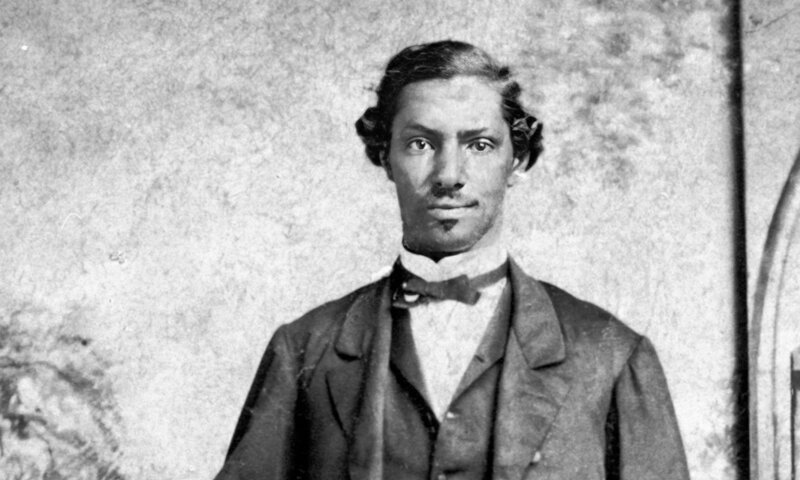
Wabash College will honor the life and legacy of John R. Blackburn, the College’s first Black student, in a series of events Monday and Tuesday to mark the start of Black History Month.
Timothy Lake, associate professor of English and Black studies at Wabash, will give a keynote address about Blackburn’s life at 7 p.m. Monday in the Fine Arts Center’s Salter Hall. A rite of return service will be held at 5:45 p.m. Tuesday at Wabash Avenue Presbyterian Church.
Seventeen of Blackburn’s descendants will gather on the Wabash campus to celebrate and honor his legacy.
Blackburn arrived at Wabash in January 1857 to begin his study in the preparatory department. Because of racial tensions on campus and in town, he was asked to return home two weeks later. While there have been scant details about his experiences for 167 years, Lake has researched Blackburn’s early life and legacy.
Blackburn was born in Essex County, Virginia, in 1841 to his owner William Blackburn and enslaved mother Fannie Randol (or Randall). William freed Fannie and their eight children in 1849 and relocated them to Cincinnati. John was educated in the Cincinnati Public Colored Schools and received private tutoring by the city’s leading physician, Israel Stone Dodge. It was Dodge’s recommendation that brought him to Wabash College.
Instead of residing on campus, Blackburn, then 16 years old, stayed with James Askins, a barber and esteemed colored citizen of the time. After two weeks, he was “sent away” from the College. Wabash historians knew that there had been a Black student on campus in 1857, but his name and what became of him after leaving Crawfordsville was unknown.
Lake’s research discovered that Blackburn was a pioneering educator throughout his life. After leaving Wabash, he returned to Cincinnati and resumed his preparatory studies with private tutors. He studied Greek and Latin with students from Lane Theological Seminary. In 1859, he was admitted to Dartmouth College. His father’s death, mother’s illness, and the start of the Civil War forced him to leave Dartmouth. In 1861, he took the position of Principal of Colored Education in Xenia, Ohio. In 1883, Dartmouth College awarded him a Master of Arts degree. He spent 62 years in education.
“The story of John Blackburn’s time at Wabash teaches us many important lessons,” said Wabash President Scott Feller. “While we are proud of our long tradition of providing access to an excellent liberal arts education to students traditionally underserved by higher education, we must understand that our history is full of stories like John’s. Many students throughout our history have had difficult paths to and through Wabash, and by understanding those challenges, we become a stronger, more welcoming institution.”
The keynote address and rite of return service are free and open to the public.